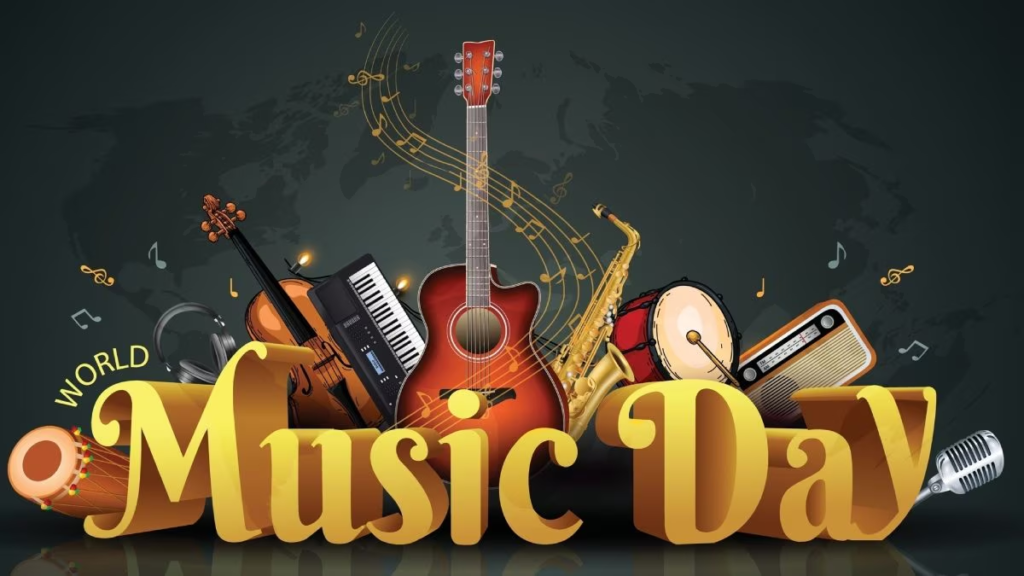
Table of Contents
- Introduction: The Global Crescendo of Music
- Understanding the Timeline of World Music Day
- Following the Sun: The Journey of Sound Around the Globe
- The Last Places to Celebrate: Who Closes the Curtain?
- Pacific Echoes: Music in the World’s Final Time Zones
- Cultural Snapshots from the Last Performances
- Midnight Melodies: What Happens After the Final Song?
- Why the Last Note Matters
- Carrying the Sound Forward: Beyond the Final Beat
- Conclusion: When One Song Ends, Another Begins
1. Introduction: The Global Crescendo of Music
World Music Day, a 24-hour celebration of sound and soul, starts with the first light in the East and ends with a final note in the farthest corners of the West. As the earth spins, it carries with it a continuous wave of melody. But have you ever wondered—where does that last note fall? Who plays the final chord in this global concert?
2. Understanding the Timeline of World Music Day
Celebrated every June 21st, World Music Day follows the rhythm of the sun. As each region enters the date, it strikes up its instruments—be it through street performances, digital festivals, or intimate acoustic sets. It’s not one event but a worldwide relay of rhythm, where time zones act like invisible stages.
3. Following the Sun: The Journey of Sound Around the Globe
The first official melodies of World Music Day often rise with the dawn in Kiribati, New Zealand, and Fiji—islands tucked into the earliest time zones. From there, music rolls westward through Asia, Europe, Africa, and the Americas, tracing the earth’s spin like a needle on a record. But it’s the places last to greet June 21st that hold a unique musical responsibility—the final performance.
4. The Last Places to Celebrate: Who Closes the Curtain?
The final echoes of World Music Day are heard in places such as:
- Baker Island and Howland Island (UTC-12, largely uninhabited)
- American Samoa and Niue
- Hawaii and parts of French Polynesia
Though small in population, these locations become the grand finale of the global music wave. Whether by beach bonfire, local drum circle, or digital stream, the music doesn’t stop—it simply fades into tomorrow.
5. Pacific Echoes: Music in the World’s Final Time Zones
- Hawaiian Harmonies: With ukuleles strumming and ocean breezes whispering, Hawaii blends native chants and contemporary music to close the celebration with soul.
- Samoan Beats: Traditional Polynesian percussion and community gatherings create an island finale that feels ancient and alive.
- Niue’s Night Rhythms: Though remote, music in Niue reflects rich oral traditions, echoing under starlit skies as the day ends.
The performances in these regions are more than events—they’re farewells wrapped in sound.
6. Cultural Snapshots from the Last Performances
Imagine:
- A solo guitarist silhouetted against the Pacific sunset
- A local choir singing farewell songs in a beachside chapel
- Families gathering around radios or Bluetooth speakers, letting the last symphonies of the day sink in
These are not global headlines, but they’re deeply human moments. Quiet, powerful, unforgettable.
7. Midnight Melodies: What Happens After the Final Song?
When the last chorus ends, the world doesn’t fall silent—it listens. Artists share recordings, fans replay favorite tracks, and digital platforms keep music flowing even after the official day ends. For many, the hours following midnight become a time of reflection, mixing nostalgia with creative spark.
8. Why the Last Note Matters
The final note isn’t just a punctuation mark; it’s a celebration of completion. It reminds us:
- That we are part of a larger rhythm
- That art doesn’t need a spotlight to be meaningful
- That endings, when filled with intention, can be just as powerful as beginnings
The last performance becomes a bow to the planet, a global “thank you” for listening.
9. Carrying the Sound Forward: Beyond the Final Beat
Music doesn’t stop when World Music Day ends. In fact, that final performance often inspires the next:
- Artists record and release late-night tributes
- Communities plan year-round cultural programs
- Listeners set intentions to explore global sounds every day
The “final note” isn’t a full stop—it’s a bridge to the next verse.
10. Conclusion: When One Song Ends, Another Begins
World Music Day may last just 24 hours, but its rhythm continues in hearts, homes, and headphones long after the sun sets on the final stage. Wherever that last note plays—be it on a sandy beach or through digital airwaves—it carries the spirit of a global celebration that never truly ends.
So as one day fades into the next, remember: music is always playing somewhere. All you have to do is listen.

